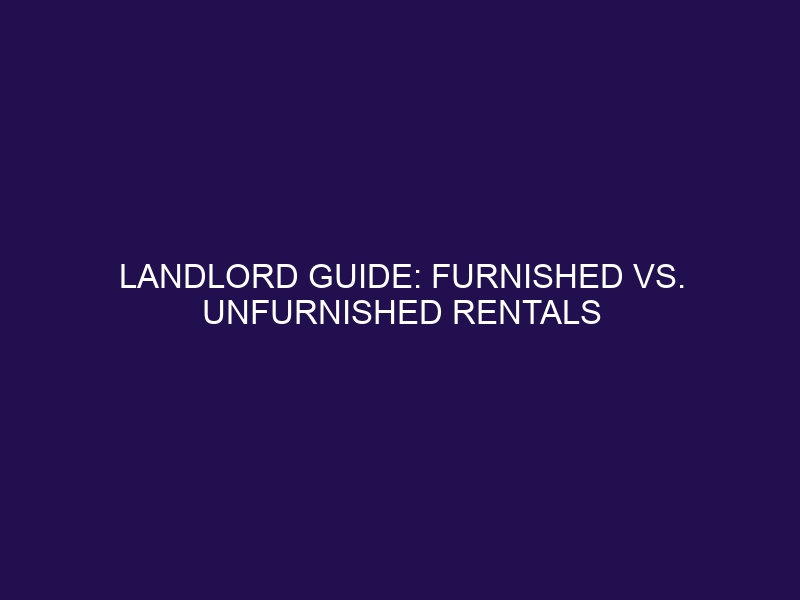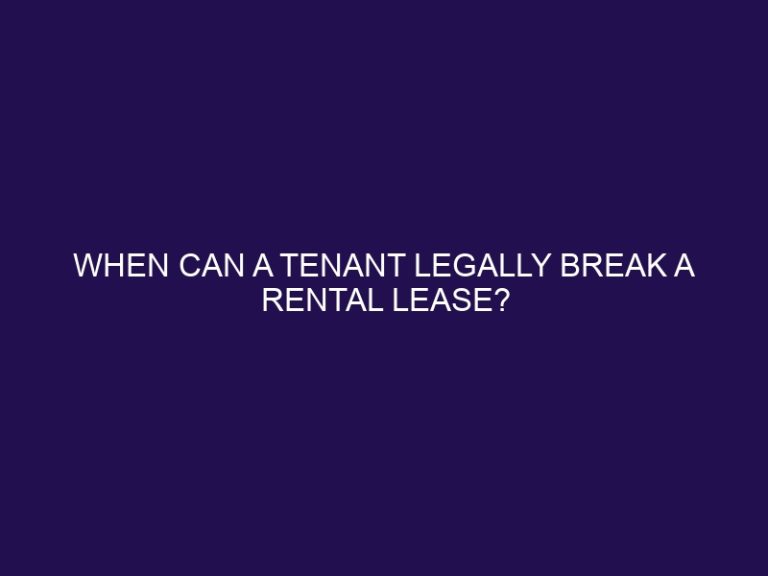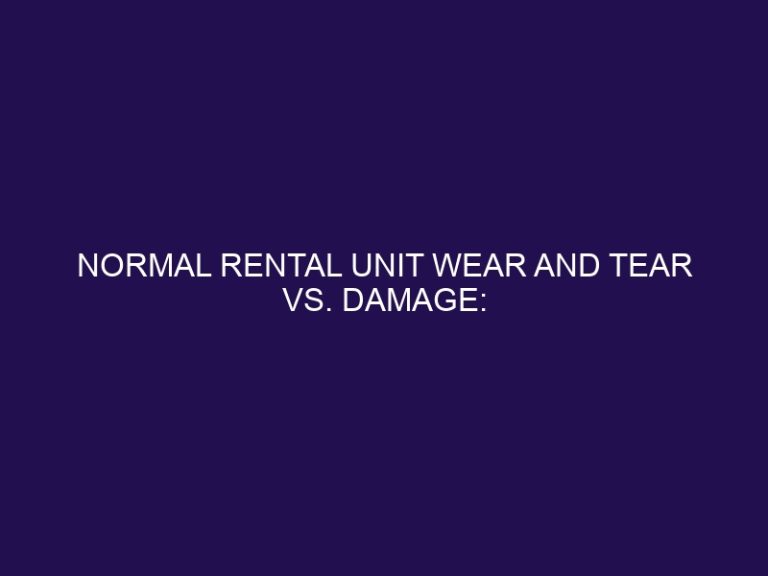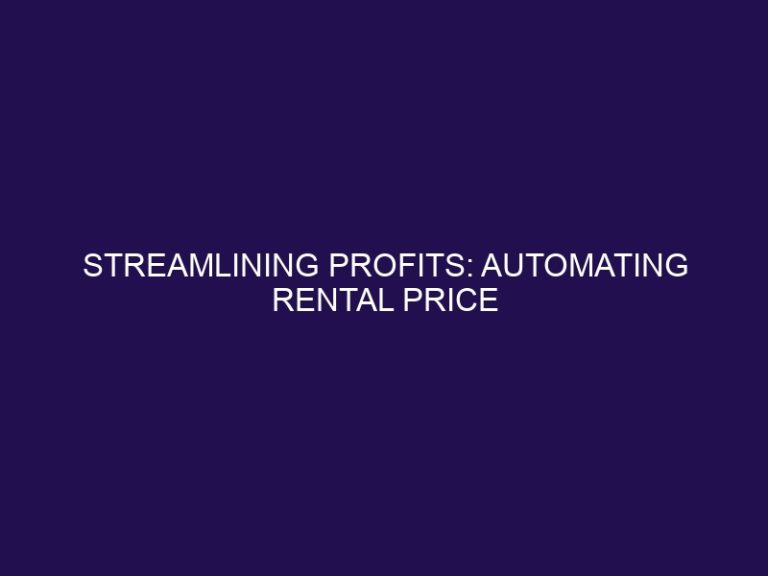Landlord Guide: Furnished vs. Unfurnished Rentals
The decision to rent out a property as furnished or unfurnished is an important consideration for landlords. Each option comes with its own advantages and disadvantages. By weighing these factors, landlords can determine the best approach for their rental properties. In this guide, we will explore the benefits and drawbacks of furnished and unfurnished rentals and discuss key factors to consider when choosing between the two.
Furnished rentals offer convenience for tenants as they come fully equipped with essential furniture and appliances. This can attract a specific market of tenants, including students, young professionals, or individuals looking for temporary housing. On the other hand, furnishing the property can be costly and may require regular maintenance and replacement. the furnished rental market may have higher tenant turnover rates.
Unfurnished rentals provide flexibility for tenants who prefer to bring their own furniture and personalize the space. This option is ideal for long-term tenants, families, or individuals with established belongings. However, unfurnished rentals may attract a narrower pool of tenants and require additional marketing efforts to stand out. landlords need to consider potential storage costs for any furniture or appliances they may own.
When deciding between furnished and unfurnished rentals, several factors come into play. First, landlords should consider the target tenant market for their property and tailor the rental accordingly. Budget is another crucial aspect, as furnishing a property can be a significant upfront investment. The duration of stay is also important as furnished rentals generally cater to short-term stays, while unfurnished rentals are more suitable for long-term tenancies. Finally, landlords should evaluate their desired level of flexibility and how willing they are to accommodate tenant preferences.
For landlords opting for furnished rentals, it’s essential to choose the right furniture that is functional, durable, and aesthetically pleasing. Regular maintenance and occasional replacement of furniture may be needed to keep the property in top condition. Rental agreement terms need to be clearly defined, specifying responsibilities for both landlords and tenants regarding maintenance and furniture upkeep.
For those leaning towards unfurnished rentals, effective marketing and staging techniques can attract potential tenants. Proper tenant screening is vital to ensure that the property is well-maintained and rental payments are made on time. Landlords should also establish clear protocols for handling tenant requests regarding repairs or furniture additions.
By understanding the advantages, disadvantages, and essential factors for both furnished and unfurnished rentals, landlords can make informed decisions to maximize the potential of their rental properties.
Advantages and Disadvantages of Furnished Rentals
Looking to rent a new place? Let’s weigh the benefits and drawbacks of furnished rentals. From the convenience of having everything you need at your fingertips to the potential limitations on personalization, we’ll uncover the pros and cons of furnished rentals. So, if you’re wondering whether to go fully furnished or bring your own furniture, this section has got you covered. No more guesswork – let’s dive into the perks and pitfalls of furnished rentals!
Pros of Furnished Rentals
- Choosing a furnished rental can offer several advantages for tenants. Here are some pros to consider:
- Convenience: Furnished rentals save tenants the hassle and expense of buying and moving furniture.
- Flexibility: This type of rental is ideal for short-term stays or people who frequently move due to work or personal reasons.
- Cost savings: Furnished rentals eliminate the need to spend money on furniture, which can be a significant expense.
- Time-saving: Tenants can immediately move in and start living without the time-consuming process of furnishing a space.
- Temporary living: Furnished rentals are great for students or professionals staying in a new city for a limited time.
- Staging: Furnished rentals are attractive to potential tenants and can lead to higher rental rates or increased demand.
Cons of Furnished Rentals
- Limited personalization – Furnished rentals often come with generic furniture and decor, limiting the ability to customize the space to your taste and personal style. Higher rental costs – Furnished rentals generally have higher monthly rates compared to unfurnished rentals due to the added value of furniture and amenities. Less storage space – The presence of furniture in a furnished rental reduces available storage space, making it challenging to store personal belongings. Potential wear and tear – Furnished rentals are more prone to wear and tear as different tenants utilize the furniture, leading to potential damage or need for repairs.
Samantha rented a furnished apartment and loved the convenience. Over time, she realized she couldn’t truly make the space her own and had to compromise on her personal style. She had to pay a higher monthly rent, which strained her budget. She also struggled to find storage space for her belongings, and the furniture started showing signs of wear and tear, causing inconvenience and additional expenses.
Advantages and Disadvantages of Unfurnished Rentals
When it comes to rental properties, there are advantages and disadvantages to choosing unfurnished rentals. In this section, we will uncover the pros and cons of unfurnished rentals, giving you a clear understanding of what to expect. From the convenience of personalization to the potential cost savings, we’ll explore how an unfurnished rental can offer flexibility and align with your specific needs. On the flip side, we’ll also address some potential drawbacks that you should consider. So, let’s dive in and discover the ins and outs of unfurnished rentals!
Pros of Unfurnished Rentals
- Flexibility: Unfurnished rentals offer the pros of flexibility as tenants have the freedom to personalize their space with their own furniture and décor.
- Cost-saving: One of the pros of unfurnished rentals is that they tend to have lower rent compared to furnished ones since tenants are responsible for furnishing the space.
- Long-term stays: Unfurnished rentals are particularly suitable for tenants planning to stay for an extended period as they have the option to bring their belongings, making it one of their advantages.
- Minimalist lifestyle: Unfurnished rentals encourage a minimalist lifestyle, which is one of the pros, allowing tenants to focus on essentials and reduce clutter in their living space.
- Personal style: With unfurnished rentals, tenants can take advantage of the pros by creating a space that reflects their personal style and design preferences as they have the opportunity to furnish it accordingly.
Cons of Unfurnished Rentals
- Initial cost: Renting an unfurnished property typically requires a larger upfront investment to purchase furniture and appliances.
- Flexibility: Unfurnished rentals may lack flexibility for tenants who do not want to commit to purchasing furniture or have short-term housing needs.
- Maintenance and repairs: The responsibility for maintaining and repairing furniture, appliances, and other furnishings falls on the tenant in unfurnished rentals.
- Limited market: Unfurnished rentals may appeal to a smaller pool of potential tenants, limiting the rental demand and potentially increasing vacancy periods.
- Higher moving costs: Tenants of unfurnished rentals generally have to incur additional costs to move and transport their own furniture and belongings.
Consider offering partially-furnished options, providing essential items like a bed and kitchen appliances, to attract a wider range of potential tenants.
Factors to Consider when Choosing between Furnished and Unfurnished Rentals
When deciding between furnished and unfurnished rentals, there are several factors to take into consideration. From your target tenant market to your budget, duration of stay, and flexibility needs, each sub-section of this guide will shed light on important aspects to help you make an informed choice. So, whether you’re a landlord or a prospective tenant, buckle up and let’s explore the key factors that will shape your rental decision.
Target Tenant Market
The target tenant market is a crucial factor to consider when deciding between furnished and unfurnished rentals. By understanding the preferences and needs of potential tenants, landlords can tailor their rental properties to attract the right audience. Here is a breakdown of the target tenant market for both options:
| Furnished Rentals | Unfurnished Rentals |
| Target young professionals, students, and short-term renters who value convenience and flexibility. | Target families, long-term renters, and individuals who already have their own furniture. |
| Appeal to individuals who are relocating or have temporary housing needs. | Attract tenants looking for a permanent residence and who want the freedom to personalize their space. |
| Higher rental rates due to the added value of furniture and amenities. | Lower rental rates as tenants are responsible for furnishing the property. |
By understanding the target tenant market, landlords can make informed decisions about whether to offer furnished or unfurnished rentals to maximize their property’s appeal and profitability.
Budget
When it comes to deciding whether to rent a furnished or unfurnished property, your budget will undoubtedly play a significant role in influencing your decision-making process. Here are a few key factors to take into account:
-
Rental Cost: The rental cost for furnished properties is typically higher due to the inclusion of furniture and additional amenities.
-
Upfront Expenses: Unfurnished rentals, on the other hand, usually require tenants to provide their own furniture, resulting in added upfront expenses.
-
Long-Term Savings: Opting for an unfurnished rental can lead to long-term savings if you already possess furniture or plan to stay for an extended period.
-
Flexibility: Furnished rentals provide the advantage of flexibility for those who desire a hassle-free move-in experience without the necessity of purchasing furniture.
-
Cost of Renting Furniture: If you decide on an unfurnished rental but still require furniture, it’s worth considering the cost and convenience of renting furniture instead of buying it outright.
Duration of Stay
When considering whether to choose a furnished or unfurnished rental, the duration of stay is a crucial factor to take into account.
Considering the duration of your stay is vital in making the most suitable choice that aligns with your needs.
Flexibility
Flexibility is a key factor to consider when choosing between furnished and unfurnished rentals:
- Mobility: Furnished rentals provide the flexibility to move without the hassle of transporting furniture.
- Customization: With unfurnished rentals, you have the freedom to decorate and personalize the space to your liking.
- Cost: Unfurnished rentals typically have lower monthly rents, allowing for more financial flexibility.
- Long-term plans: If you have long-term plans to stay in one place, investing in your own furniture may offer more flexibility in the long run.
Tips for Furnished Rentals
Looking to make the most out of your furnished rental? Look no further! In this section, we’ve got you covered with essential tips to ensure a smooth experience. Discover insights on selecting the perfect furniture, maintaining and replacing items as needed, and understanding crucial rental agreement terms. With these valuable nuggets of information, you’ll be well-equipped to create a comfortable and attractive space for your tenants, leading to higher tenant satisfaction and potentially increased rental income.
Choosing the Right Furniture
When it comes to furnishing a rental property, selecting the appropriate furniture is crucial for attracting potential tenants and providing a comfortable living environment. Here are some valuable tips to help you make the right choices for your furnished rental:
- Take into consideration the preferences and needs of your target tenant market while selecting furniture.
- Opt for durable and easily maintainable furniture pieces that can withstand regular use.
- Ensure a cohesive and functional layout by choosing furniture that fits well within the available space.
- Go for furniture that is both inviting and comfortable, featuring neutral colors that can effortlessly complement various decor styles.
- Invest in high-quality mattresses and bedding to guarantee a restful night’s sleep for your tenants.
- Pay attention to the size and scale of the furniture to ensure it harmoniously fits the rooms without overwhelming the space.
- Include essential furniture items such as a bed, sofa, dining table, chairs, as well as storage options like dressers and closets.
By conscientiously selecting suitable furniture, you can create an appealing and practical living space that will captivate potential tenants.
Maintenance and Replacement
When choosing between furnished and unfurnished rentals, both maintenance and replacement are important considerations.
- Maintenance: In furnished rentals, landlords have the responsibility of maintaining the furniture and appliances provided. This includes conducting regular inspections, making repairs, and performing replacements as necessary.
- Replacement: If any damage or wear and tear occurs, landlords may have to replace furniture or appliances in furnished rentals. It is crucial to note that this process can be both costly and time-consuming.
Rental Agreement Terms
Rental agreement terms are essential and must be considered when deciding between furnished and unfurnished rentals. Here are some important factors to keep in mind:
- Lease Duration: It is crucial to determine the length of the lease, including any flexible terms or options for renewal.
- Payment Terms: It is necessary to clarify the rent amount, due dates, and acceptable methods of payment.
- Security Deposit: Understanding the required amount for the security deposit, conditions for refund, and any deductions for damages is important.
- Utilities and Maintenance: The rental agreement should clearly specify who is responsible for paying utilities and handling maintenance and repairs.
- Termination Clause: It is advisable to thoroughly review the terms for early termination, subletting, or changing roommates.
True story: I once had the experience of renting a furnished apartment with a vague lease agreement. This led to confusion regarding responsibilities for maintenance and replacement of furniture. I learned an important lesson from this: Always ensure a clear rental agreement to avoid any misunderstandings.
Tips for Unfurnished Rentals
Looking for tips on managing unfurnished rentals? Look no further! In this section, we’ll explore some valuable insights to help you navigate the world of unfurnished rentals. From effective marketing and staging techniques to smart tenant screening strategies, we’ve got you covered. We’ll also dive into handling tenant requests like a pro. So, whether you’re a seasoned landlord or just starting out, get ready to enhance your knowledge and elevate your unfurnished rental game!
Marketing and Staging
To effectively market and stage an unfurnished rental property, it is important to incorporate these strategies:
- – Emphasize the potential and flexibility of the space, allowing tenants to personalize and make it their own. Highlight the blank canvas aspect of the property.
- – Utilize virtual staging techniques to showcase the potential of the property and help prospective tenants envision their furniture in the space.
- – Invest in high-quality professional photography to capture the essence of each room and showcase the property’s features.
- – Enhance curb appeal by ensuring the exterior is well-maintained, with a tidy lawn, fresh paint, and attractive landscaping. This will make a positive first impression.
- – Include a detailed floor plan to help tenants visualize the layout and flow of the property.
By implementing these marketing and staging strategies, you can effectively attract potential tenants and achieve higher occupancy rates for your unfurnished rental property.
Tenant Screening
The process of tenant screening is of utmost importance for landlords in order to discover dependable and trustworthy tenants. When screening potential tenants, there are several significant factors to take into account:
- Credit check: Evaluate the tenant’s financial stability and ability to pay rent on time by conducting a comprehensive credit check.
- Background check: Thoroughly investigate the tenant’s criminal history, eviction records, and rental history to ensure that they will uphold their responsibilities as a renter.
- Employment verification: Confirm the tenant’s employment status and income to ensure that they possess a consistent and reliable source of income to meet their rental obligations.
- Interview: Engage in a face-to-face or virtual interview to gain a deeper understanding of the tenant and inquire about specific aspects related to their rental requirements and expectations.
By diligently screening tenants, landlords can effectively diminish the risk of problematic tenancies and discover tenants who are an ideal fit for their rental property.
Handling Tenant Requests
Handling tenant requests in rental properties is crucial for maintaining tenant satisfaction and a positive landlord-tenant relationship. Here are some steps to effectively handle tenant requests:
Frequently Asked Questions
1. What is the difference between furnished and unfurnished apartments?
Furnished apartments come with all the necessary furniture for comfortable living, including items like beds, sofas, and kitchen utensils. On the other hand, unfurnished apartments have no furniture, and tenants must provide their own.
2. What are the advantages of renting a furnished apartment?
Renting a furnished apartment allows tenants to move in immediately without needing to purchase additional items. Furnished apartments typically command higher rents, offering convenience to tenants and potentially higher profits for landlords.
3. What does a fully furnished apartment include?
A fully furnished apartment should include furniture for the living room, bedroom, and dining area, as well as appliances, kitchen utensils, and basic household items such as a shower curtain and floor mat. However, perishable items and personal belongings are the responsibility of the renter.
4. Are semi-furnished apartments a good option?
Semi-furnished apartments usually have essential furniture pieces like a sofa, bed, dresser, and table and chairs. While they may lack smaller items like window treatments or storage shelving, they offer a balance between providing basic necessities and allowing tenants to personalize their space.
5. Is it common to charge higher rents for furnished apartments?
Yes, furnished apartments generally command higher rental rates due to the higher cost of maintenance for landlords and the convenience they offer to tenants. Landlords can potentially charge 20 to 40% more rent for furnished apartments, especially for short-term stays.
6. What should landlords consider when deciding to furnish or not?
Landlords should consider factors such as local rental market demand, the needs of potential renters, and the cost and maintenance requirements of furnishing an apartment. They should also be aware of security deposit limits and industry standards regarding furnished vs. unfurnished rentals.







